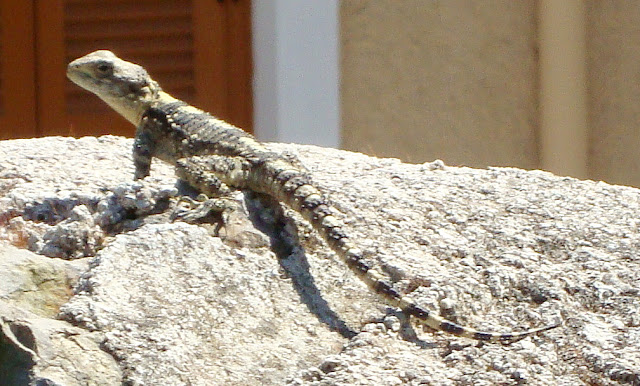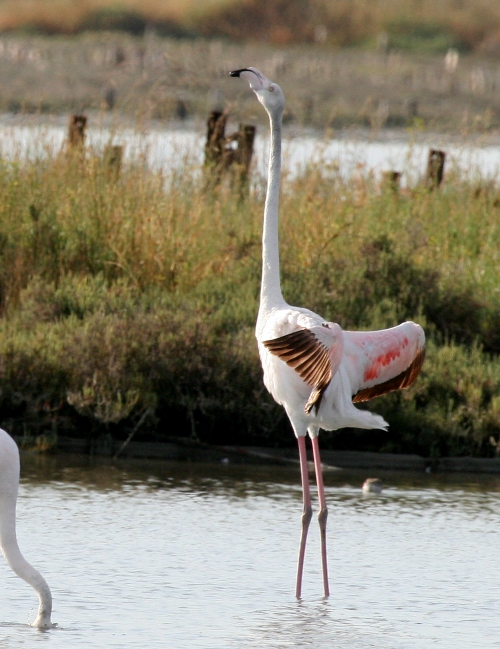"Spring
had arrived and the island was sparkling with flowers. Lambs with
flapping tails gamboled under the olives, crushing the yellow crocuses
under their tiny hooves. Baby donkeys with bulbous and uncertain legs
munched among the asphodels. The ponds and streams and ditches were
tangled in chains of spotted toads' spawn, the tortoises were heaving
aside their winter bedclothes of leaves and earth, and the first
butterflies, winter-faded and frayed, were flitting wanly among the
flowers."
"My Family and Other Animals" by Gerald Durrell.
Corfu has got a natural environment of unprecedented beauty , which looks like an ever-changing painting, with many different shades of green and blue and the colorful wild flowers .
The rural scenery with the farm land and the forests , as well as the green olive groves on the slopes of hills which reach down to the shores and the welcoming beaches, forming a really beautiful picture .
The cultivation of the olive tree is predominant which makes the islands of Corfu and the surrounding area immense olive groves . This unique for the islands of the region wealth of the flora and the fauna makes Corfu and Paxos ideal places for the natural lovers .
Fauna
A heaven on Earth , like the one of the Corfu archipelago, with luxuriant vegetation and the richest flora of all Mediterranean islands (6000 species) can only be host to a large number of animal species.
In spite of the fact that the thick vegetation of the archipelago and malpractice in agriculture have decreased the populations of certain species, especially birds and small carnivorous animals, the wealth of the fauna here is remarkable . Nowadays, after almost a decade of implementation of sustainable policies the fauna seems to have recovered . Today, Corfu, Paxos and the Diapontian islands are meeting points for nature lovers . |
Climate
The climate of the archipel of Corfu is warm Mediterranean. The summer here is warm and relatively dry with a blue sky, often cooled by seasonal breezes, offering the ideal conditions for Surfing , while rarely is it interrupted by rains. The mountainous areas are cooler. The winter here is mild . Rainfall occurs mainly from November till March . On average, there are 3000 hours of sun per year with an average daily sunshine duration of 8,5 hours .
| Meximun temperatureF | Apr | May | Jun | Jul | Aug | Sept | Oct |
| Corfu | 69 | 74 | 80 |
84 | 84 | 80 | 75 |
| London | 56 |
61 | 68 | 71 | 70 | 66 |
56 |
|
|
|
|
|
|
|
|
| Hours of sunshine |
|
|
|
|
|
|
|
| Corfu | 7 | 10 | 12 | 12 | 11 | 9 | 6 |
| London | 5 | 6 | 7 | 6 | 6 | 5 | 3 |
|
Flaura
6000 rare species of wild flowers, 55 species of wild orchid and tenths of aromatic and medicinal herbs , have got the richest flora of all islands in the Mediterranean Sea and are a real natural heaven .
 Corfu, Paxos, Othoni, Erikousa and Mathraki, with Corfu, Paxos, Othoni, Erikousa and Mathraki, with
The wealth and the variety of the flaura and the fauna are due to the humid, warm climate , the high degree of precipitations, the soil conditions and the geographic position of the islands , which make them be the right place for plants both from Europe and from Africa.
At Spring the islands look like endless gardens with flowers. This season is ideal for walking and trekking in the rich network of paths.
Mid-February is the blossom time of the first wild orchid Barlia Robertiana, while in the beginning of Spring the area is full of Anthemia chamomila (medicinal chamomile ). In Autumn we find wild cyclamens , sweet violets Viola Odorata, hyacinths Narcissus tazetta, iris Iris Unuicularis, liliesSternbergia lutea and crocuses Crocus Bowles, Crocus Pickwick, Crocus longiflorus etc.

From the sandy beaches with the lilies Pancratium maritimum to the cracks in the rocks on the steep slopes of Mount Pantokrator , Corfu offers to the lovers of nature and wild flowers a huge variety of beautiful and rare plants , impossible to come across on another island of the Mediterranean .
|
Protected species
Roughtail Rock Agama (Laudakia stellio - Agama stellio), Otter (Lutra lutra)
Laudakia stellio - Agama stellio (Roughtail Rock Agama)
It is the only European representative of the family of Tropical lizards . It lives in Corfu , in a slam region at Thessaloniki and on certain islands of the Aegean Sea .
According to oral tradition , it moved to Corfu through the food supplies of the English army or it ws brought here by some naturalist without of course being able to document one of the two opinions. Below you can find an explanation for these opinions.
|
Reptiles
Green Corfu managed to preserve, thanks to the morphology of the islands, and the rich flaura, a larger variety of wildlife than other islands. The reptile population is particularly interesting , with 8 species of registered amphibians and 23 species of registered reptiles.
|
The olive tree
"The
whole Mediterranean, the sculpture, the palms, the gold beads ,the
bearded heroes, the wine, the ideas, the ships, the moonlight, the
winged gorgons, the bronze men, the philosophers - all of it seems to
rise in the sour, pungent taste of these black olives between the teeth.
A taste older than meat, older than wine. A taste as old as cold
water." "Prospero's Cell" by Lawrence Durrell .
The olive tree is the most typical tree in the Mediterranean . This tree influenced to a great extent the civilizations and the religions of the area. The cultivation of the olive tree is lost in antiquity. Today we know that people cultivated it already in the Minoan Crete in 3.500 BC .
|
Birds
 Corfu is a green island. It includes hills that go up to a mountain 900 metres high (Pantokrator) in the north and lower hills and plain areas in the south . The most important points to watch birds are the protected habitats (Natura 2000) as well as the olive groves . Antinioti Lagoon in the north, the hills and the mountain Pantokrator , the Ropas meadow in the center of the island, Korission lagoon and Alykes in the south. There is particular interest in Paxos, AntiPaxos and the Diapontian islands, as they are on the migration routes. Corfu is a green island. It includes hills that go up to a mountain 900 metres high (Pantokrator) in the north and lower hills and plain areas in the south . The most important points to watch birds are the protected habitats (Natura 2000) as well as the olive groves . Antinioti Lagoon in the north, the hills and the mountain Pantokrator , the Ropas meadow in the center of the island, Korission lagoon and Alykes in the south. There is particular interest in Paxos, AntiPaxos and the Diapontian islands, as they are on the migration routes.
|
Butterflies
In a green environment and over 400 flower species , it is natural that there is a large number of colourful butterflies . A common butterfly in the summer months is Scarce Swallowtail .
|
Fossils
For the lovers of fossils and geological discoveries , Corfu and the nearby islands offer an unexplored wealth. Especially mount Pantokratoras, with a height of 900 meters , is a Geological window to the South Balkans , which offers strong emotions and surprises. |
Natura Regions
A big part of the islands of the region, more than 10,000 hectares (ha) has been characterised as protected based on international treaties and it has become part of special pro grammes for the protection of the environment , because of its importance for life on the planet .
Natura 2000 is a European network for the protection of wildlife species and their habitats.
|
Natura regions- Alyki Lefkimmis
Until just a few years ago the region around this wetland was a salt marsh , however it closed down in 1988
. Ever since then, a lot of changes have taken place. The information
that we have on the flaura and the vegetation of this region id scarse,
and it only concerns the vegetation of the sandy beaches; however, it
is the home of interesting species of flora and several types of vegetation. Both flaura and vegetation are characterized by the predominance of foreign species , such as Arthocnemum glaucum , A. fruticosum , Halocnemum strobilaceum, Scoenchus nigricans, Juncus subulatus, Salicornia europaea, Cakile maritima, Salsola kali etc.
|
|
Natura Regions - Antinioti Lagoon
This wetland is at the northern coasts of Corfu and is considered especially important , not only because of the protected species Lutra lutra , which has been reported in the region, but also for the environmental balance of the wider region. Moreover, we should note that the region is characterized from a variety of habitats . Man activities haven't so far greatly affected the ecosystem.
|
|
Natura Regions - from Kanoni to Messoghi
This region is in the eastern part of Corfu and includes the shores from Kanoni to Messoghi
. At Kanoni region, the water is shallow. The substratum is sandstone.
Amid the upper rocks, on a sandy substratum, develops the marine phanerogam Cymodocea nodosa . The meadows of Posidonia oceanica extend at depths less than 1,5 m south of the village Messoghi . Here, the bottom of the sea is both rocky and sandy, with pebbles and rocks of all sizes. Phanerophyceae are predominant, as well as phytocenoses Cystoseiretum crinitae .
|
|
Natura Regions - Korission Lagoon
This region is at the southwestern shores of Corfu. On the sandy beaches near the lagoon and particularly at the southern part of the region there is the unique for the region cedar woods as well as the rocky dunes , which create a unique landscape , with unprecedented looks
. The region includes Korission lake (the argest of Corfu), the coastal
area of the lake, as well as seashore regions, characterized by
various types of Mediterranean vegetation .
|
|
Natura regions - Paxos and AntiPaxos islands
This region is comprised by a group of chalky islands and
isles with rocky shores, which quite often are degenerated, as well as
by a marine part around the islands, with a depth of up to 50 m. The
largest islands of this group, Paxos and AntiPaxos , have got an interesting morphology . Paxos is the only island of the complex with permanent residents (appr. 2.800 residents). The flaura of the region is comprised of approximately 450 species .
|










